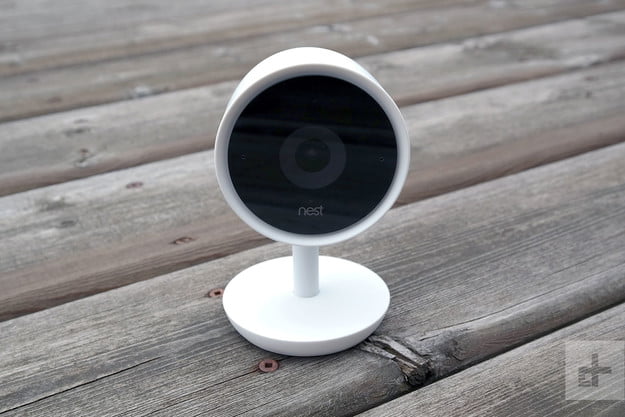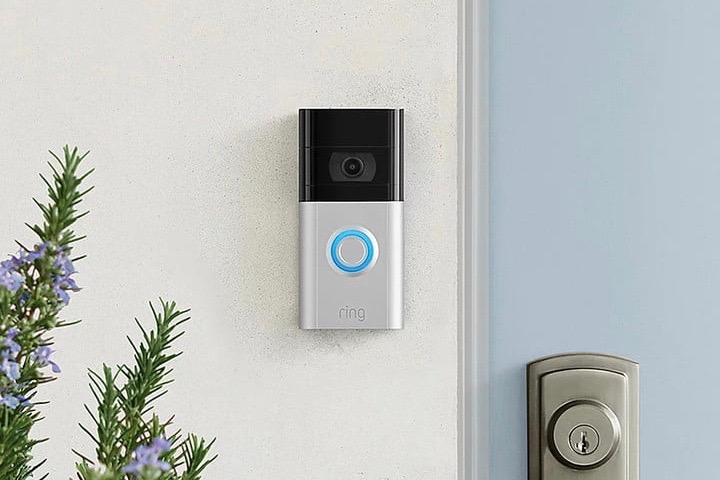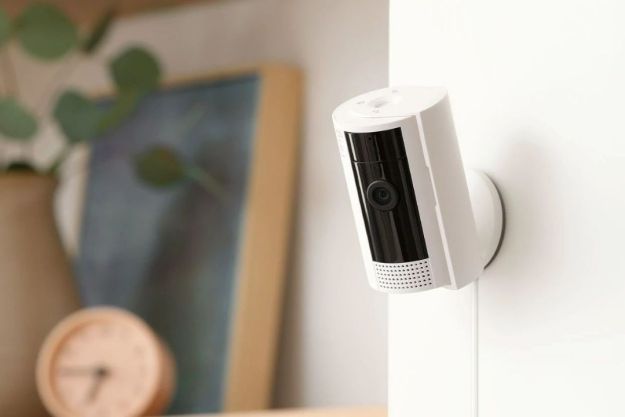For home security, there’s really no such thing as “too many features” when it comes to peace of mind for you and yours, your valuables, and your property. The leading home security brands of today are equipping their cameras, video doorbells, spotlights, sensors, and more with cutting-edge surveillance, recording, and smart tech. Terms like 4K resolution, motion tracking, megapixel, and frame rate are thrown around to great excess.
It’s more than just marketing though: When shopping for home security products, especially cameras, you’ll want your new electronic watchdog to offer the most. Keep your eyes peeled for an intuitive mobile app for monitoring on the go, a fast sensor for quick video capture and hardware operation, plenty of storage options for footage, and, perhaps most importantly, top-notch image quality for both live and recorded formats.
Through research and shopping, you’ll undoubtedly encounter a dedicated suite of image quality buzzwords. Mixed with neighboring laurels like color accuracy, brightness, and exposure, expect to find HDR (High Dynamic Range) as a much-advertised camera spec. Long available on our smartphones, TVs, and other A/V gear, HDR is also a major staple of today’s leading home security cameras. But, in terms of footage capture, is it essential? The short answer is no, but it’s most certainly preferred. Let’s break things down a little more to understand why.
The fundamentals of HDR
HDR is everywhere these days. In the world of TVs, game systems, Blu-ray players, and other video components, it goes hand-in-hand with features like 4K and the latest HDMI protocols. In terms of behind-the-scenes tech, HDR decoding is all about contrast ratio. In display speak (TVs, computer monitors, phone and tablet screens, etc.), contrast ratio refers to the range between the lightest parts of an image versus its darkest parts. HDR-capable displays are capable of producing a more lifelike image (closer to what we see with our eyes) by automatically balancing brightness, exposure, and overall color accuracy in real-time. The end result is a vibrant picture that is closer to reality or at least closer.
In terms of cameras, the principles of HDR remain the same, but the focus shifts a bit from the image we see to how the actual image is produced. To produce an image closer to reality, an HDR-capable camera will take several shots of the same subject at multiple exposures. Then, in-camera, the sensor will combine all of the information from these snapshots to create the final image (or video).
When it comes to home security, HDR-capable cams can be a lifesaver. Why? Let’s look at a home security camera with HDR capabilities. For this article, we’ll be using the EZVIZ C6W. Do note that in terms of DIY security cameras, HDR may go by a slightly different handle. In the case of the C6W, HDR is referred to as WDR (Wide Dynamic Range).
HDR vs. SDR: A difference of details
As HDR cameras grow in popularity, older standards like SDR (Standard Dynamic Range) begin to show their weak spots. Take the following snapshots for example (both taken by my EZVIZ C6W camera). In the first photo, I have the security camera’s HDR capabilities enabled. Aside from a nearby window with blinds lowered, there’s no other light source in this image. Notice the highlights and balanced exposure. While it’s not much to look at it by itself, compare the first snapshot to the next image.

In this still, I’ve disabled my camera’s HDR function. What we’re left with is an unprocessed SDR image. Even with the same exact lighting in place, the differences are immediately apparent. Without multiple exposures at play to create the final image, the C6W’s sensor becomes reliant on natural lighting… and with little success. In a bid to balance and counter the brightness from the adjacent window light, the entire image receives a massive sheen of underexposure, letting shadows dominate.

Had HDR been enabled, the camera would have taken several internal snapshots before delivering the final pic.
Now, consider home security. With an HDR camera, the sensor is able to fill in parts of the image that would normally be obscured in an SDR scenario. Think of your run-of-the-mill burglar, dressed in dark clothes and lurking in shadows, avoiding direct sunlight and other property luminance in their mission to invade your residence. Even with a camera located right in front of your home’s main door, aiming toward sunlight, an HDR camera has the available tech to successfully underexpose the sun’s rays while filling in darker parts of the image. That backyard shed with plenty of shadow space to duck into won’t be so obscured in HDR footage, leaving our fictionalized perp with far fewer hiding places.
In a worst-case scenario, imagine your home is actually hit by a burglar. HDR recording gives you a far better shot at utilizing your camera’s motion-triggered footage to identify the thief than a potentially over- or underexposed SDR image. The difference between both formats is in the details, and when it comes to home security, the more your camera can show you, the better your overall peace of mind will be.
Our favorite HDR-capable security cameras
Shopping for home security cameras can be tough, especially when your search is hinged on must-have features like HDR. To make your next Amazon or Best Buy excursion a bit easier, we thought we’d weigh in. Here are three of our favorite HDR-capable cams you can find online or on the shelves of your local brick-and-mortar tech joint.
Arlo Pro 4 Spotlight Camera

One of the most advanced indoor/outdoor cameras available today, the Arlo Pro 4 records in 2K HDR, requires no SmartHub for connectivity and is powered by a six-month battery. Plus, onboard support for Alexa, Google Assistant, and HomeKit means you can view live video feeds on your home’s compatible smart displays.
Nest Cam IQ Indoor

One of the pricier smart security cameras, Google’s Nest Cam IQ Indoor delivers detailed day and nighttime recordings, two-way audio, and advanced motion tracking for your home.
Ring Video Doorbell 3

While not a traditional home security camera, the Ring Video Doorbell 3 is capable of impressive HDR recording (the feature must be toggled on in the Ring app). Combine that with a built-in battery (or optional hard-wiring), an aesthetically pleasing design, and motion alerts for your compatible mobile device and it’s easy to see why the Ring Video Doorbell 3 is often recognized as one of the top video doorbells on the market.
Need more insight for your home security camera purchase? Check out our roundup of the best home security cameras of 2021. Looking for a white-glove install? Take a look at our roundup of the best home security systems of 2021, featuring DIY and professional setup options.
Editors' Recommendations
- SimpliSafe is now using AI to prevent burglars from entering your home
- Eufy shows off four security cameras and an upcoming robot vacuum
- Philips Hue adds support for cameras and sensors
- Blink Outdoor Camera 4 launches with Person Detection, new design, 2-year battery life
- SimpliSafe now offers live home monitoring with new Smart Alarm Wireless Indoor Security Camera




